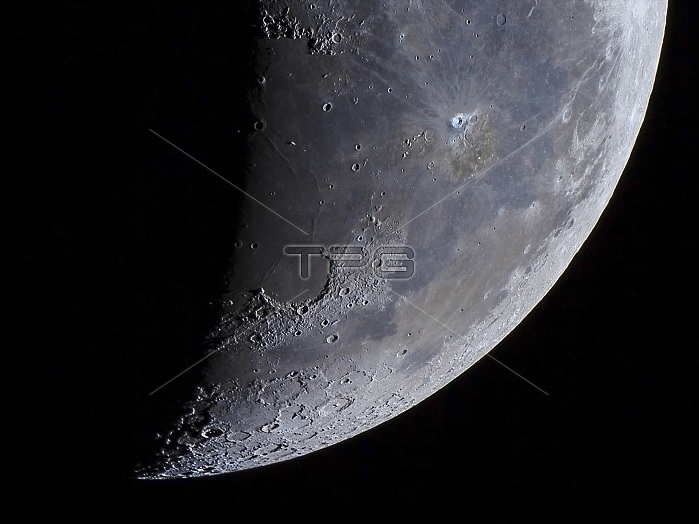
Telescopic view of the Moon in the last quarter phase. Various craters and laval fields (lunar mares) are visible. Sinus Iridum (Latin for "Bay of Rainbows") is near the center, a lava plain half-surrounded by mountains, one of the most beautiful features on the Moon. The 236-km wide bay is a remain of a large impact crater, which was subsequently flooded with basaltic lava. On the upper right is the 40-km wide Aristarchus crater, named after the Greek astronomer. It is the brightest of the large formations on the lunar surface, with an albedo nearly double that of most lunar features. The Moon is not entirely greyscale. The very pale colors, slightly enhanced here, are real and represent the various types of iron and mineral deposits. The blue hues reveal titanium rich areas while brown-orange and purple colors show areas poor in titanium and iron.
| px | px | dpi | = | cm | x | cm | = | MB |
Details
Creative#:
TOP22315610
Source:
達志影像
Authorization Type:
RM
Release Information:
須由TPG 完整授權
Model Release:
N/A
Property Release:
No
Right to Privacy:
No
Same folder images:

 Loading
Loading